#Post Study Work In New Zealand
Explore tagged Tumblr posts
Audio
(Shivang Easy Visa)
#SoundCloud#music#Shivang Easy Visa#nz post-study work visa updates#new zealand visa changes 2024#pg diploma work visa nz#nz immigration news 2024#new zealand work visa guide#study in new zealand 2024#immigration new zealand updates
1 note
·
View note
Text
Unlock extraordinary educational opportunities in New Zealand with Study Pathways. Your pathway to success, offering comprehensive support and top-notch guidance for an enriching study experience. More at https://bit.ly/3Pm7wFz
#study nursing#new zealand post study work visa#post study work visa new zealand#new zealand study visa process#student visa nz#student visas nz#why study in new zealand
0 notes
Text
Post-study work visa in New Zealand is a gateway to a bright future in this picturesque country. New Zealand offers an abundance of opportunities for international students seeking to extend their stay and kick start their career. Explore the blog to learn more.
0 notes
Text
Post-Study Work Visa in New Zealand: A Pathway to Career Opportunities

Discover the advantages of the Post-Study Work Visa in New Zealand, which allows international students to extend their stay.
#post study work visa new zealand#post study work visa nz#Post study work right qualification in New Zealand#apply post study work visa nz
0 notes
Text
0 notes
Link

#New Zealand Work Visa#Apply Working Holiday Visa In NZ#Get Skilled Worker Visas In New Zealand#Work Permit In New Zealand#New Zealand Post Study Work Visa
0 notes
Text
i wrote a big long essay talking about tlt and how it engages with describing the skintones of brown characters its under a read more bc it is so long.
I already left a long comment about this on someone else post but I wish I could study tazmuirs odd little habit of dancing around the fact that Gideon and Harrow are women of color when she describes them, and how this kind of extends to other brown characters
We get a million descriptions for how sickly pale ianthe Silas and cytherea are, what a lovely golden tan corona has, the odd tannish yellow hue of colum, all imagined by her, in her own words, to be white. Then when it comes to Marta and Judith they're called dark like Once in the text. I don't think it's even mentioned for Jeannemary and magnus in the entirety of gtn though I will gladly stand corrected if I missed something. It's such a non factor for them, which normally I would overlook if it wasn't for the aforementioned specificity of how white characters are described on Top of one of the major themes of the book being how John, a Maori man, resurrected a largely Polynesian population and then proceed to rule them using the exact same methods that actively colonized new zealand. Like I just think it's really interesting that in many ways, the story is about two young Maori women completely stripped of cultural heritage, they can't even speak te reo maori they cannot even conceptualize the scale of that kind of loss. Theyve been to earth once and during her brief time there Gideon literally died on it's soil it feels so poignant
Back to them specifically being Not Pale, this is not me saying they would be "less" maori if they were light-skinned that's total bullshit and the entire paradigm exists as a product of European bullshit. My fascination is more with the fact that tamsyn has clearly thought of them as midtoned to dark skinned. I'm going to be really generous and disregard the Tommy Arnold covers- he is a talented artist but he's not the author and Taz stated in an interview that she didn't envision Gideon with an undercut either so he clearly has little liberties he can take and I'm fine with that get your coin dude. For these two I'm going to have to focus on Nona the Ninth, bc for the entirety of gtn, harrow is described as grey, and while I understand that's bc she's constantly under a mountain of white and black facepaint, we basically never get an objective description for either of them. Gideon stand out features are her build, hair and eyes, like a lot of characters, but it could have been pretty easy to throw in a line about how she seems less desaturated than what one might expect from a ninth cavalier, like a rich warm brown, possibly hinting to other characters that she isn't a ninth native
Htn also gives very little to work with, again harrows primary colors are the blacks whites and greys of facepaint and her hair and the reds of constantly sweating blood. The character who's darker skintone is Most remarked upon (also one of the few ever constantly headcanoned) as black, is g1deon. I've actually spoken to a few people about this and there seems to be some actual Mandela effect shit going on where people remember Taz saying he's black despite me never once finding evidence for this. However, this is not a case where I'd be overjoyed to be proven wrong, because g1deon being the one black guy in this entire cast, the one who's dark skintone is commented on the most, being the guy who barely speaks, tries killing harrow with a spear 14 times and then dies offscreen. Not good. Bad, actually
Finally onto ntn, in the beginning chapters Nona remarks her (harrows) skintone is the color of an egg carton. I assume she means the light tan, desaturated brown of the cardboard used in certain cartons, which is fitting for harrow, girls lived in an ice cave for 17 years. This is basically the only word we get on it. I believe a few times the text will say something about pyrrha's (g1deon's) brown Everything; brown skin, russet brown hair, rich brown eyes. that character gets to be viewed and constantly affirmed as a brown character in teh way gideon and harrow arent, it kind of others pyrrha. to contrast camillas hands are called tanned way at the beginning while recording nona's dream, then at the way end it says, "Her face still looked grey beneath its nice normal olive," olive being used to describe her once before in gtn as far as i can see. pyrrha's (g1deon's) skintone is one of her most notable features, its brought up to a noticeable agree the text wants you to keep it in your mind when you think of the saint of duty; "Most of Pyrrha was the colours of the building site: deep dried-out browns, dusty hunks of clay, rusted metal." "Pyrrha wouldn’t burn any colour other than her deep cool brown." "Nona took the water from Pyrrha’s brown, work-chapped hand and even sipped it" "Pyrrha had carried Camilla to bed in her big brown arms like Cam weighed nothing" "Pyrrha said, “Thanks, Nums,” and drained the whole thing. Nona,fascinated, watched the brown column of her throat move as she swallowed." its just notable to me when alternatively with nona you'll get a line like "Camilla didn’t say anything to that either, only rubbed her wrists where the tape had been. Nona’s skin was already back to its nice normal colour." like just the vagueness in nice normal color, we get one line about what shes supposed to look like in the beginning and thats it
towards the end during the broadcast, nona gets her first clear look at kiriona, described as: "warm-coloured skin that should have been a similar brown hue to Nona’s, except that there was something wrong with it." break out the champagne its official
Obviously, dying takes some color from you. If anything, gideons desaturation should make them More comparable given the egg carton comment and harrows general state of constant anemia. Has Nona gotten darker during her time on new rho? Was Gideon lighter than the cover led us to believe? We don't know. We well never know, which is odd, bc these books fucking love purple prose about people's appearances. We have like seven different synonyms for the shade of ianthes hair. New words for black have to be invented in order to convey harrows eyes which are Black, not the dark muddy brown of someone like ortus. It's less that I'm bothered by the text not hyperfocusing on their skin and more it picking and choosing when it will laser focus on a detail like that, and how often it's skipped over to the point that I like, constantly see people draw harrow as incredibly pale, which is very different from being light-skinned
Finally, I know people can dismiss this as like an audience interpretation thing. I know I actively draw harrow darker than Gideon which I know isn't canon. But this is less about Fandom response to the text and more the text itself and how it's like. Afraid to say brown. near the end of ntn i found One instance of it referring to gideons "slim brown hand" on nonas cheek and that is direct as it gets. even her other like, strongly non european traits are sort of danced around. her nose is "a nose that was the complete opposite of Nona’s nose, one that put her in mind of those big poison desert cats Born in the Morning was crazy about." a very fanciful description, you have to infer that nona means that its probably flat and wide, also giving us the information that harrows is most likely narrow and straight, possibly downturned. im not opposed to this, especially given the character talking about her is nona, but then you get the following paragraph:
"Her skin was very much dead-person skin, ashen and tinted the wrong colour around the nostrils and the mouth. But even if she hadn’t been dead, Nona was critical. Her eyelashes were very dark, but short and curly, whereas Nona thought all eyelashes should be long and straight (her own eyelashes were long and straight). The corpse had too much mouth and a dimple (nobody in her home had a dimple). You could not, at least, see the veins in her eyelids, which were heavy and cold and deep-set. But Nona thought it was going to be a shame to go from being so lovely as she was to being so—redheaded."
its a very frank description. dimple, curly lashes, red head, dead skin, probably a wide mouth. her nose is contrasted against nonas nose, which is also never directly described, and then compared to a fantasy animal we have never heard of until right now
kicks rocks. there isnt a point to this. the series is almost over, there is zero reason to like, knock on taz's door and ask why she did this or that. it doesnt stop me from loving the series, and the insinuation that noticing this means i must dislike the series is frankly insane (real thing that happened). if someone got the impression that harrow was white given how shes described i wouldnt blame them honestly, its most apparent she isnt in the third book (with the cover art being incredibly ambiguous) and a single blog post from taz mentioning shes maori, immediately followed by an "oh i dont care how you see the characters" addendum, which i think is like. an odd thing to tack on bc them descended from kiwis is like, very integral to the story, and gideon being the daughter of the maori man who took everything from her she didnt even know she could have and the (presumably, given her name and a very brief description) maori woman fighting to get that world back its like. damn. it feels a little important. that the audience knows theyre maori. like a little. it feels intertwined with the whole thing about john using european standards of imperialism and general aesthetics to hurt his own kid. actually.
#tlt meta#hi im black but not maori or kiwi so thats where im coming from with all this#i am fully aware some fans of color will disagree with me thats chill this is just where im at#i have never been a fan of being cagey with how a character looks#it feels like. idk kind of leaning into the fact that the audience wants a blank slate to project onto#and with her being So specific about it like this guy is nz chinese these two are tongan these two are mixed maori this guy is pasifika#it just kind of intrigues me like do you have reasons why as to each one specifically or did they jsut kind of. happen upon you#spring up fully formed#this isnt like a 'tlt is bad' 'you should feel bad if you thought this character was white or black' thing#its strictly about how the text communicates certain ideas and how the audience reacts to them#were kind of primed for . a waifish snobby pale aristocrat. ianthe is Right There harrow being white or pale feels like a natural assumptio#but it is. directly contradicted by the text. and done in a way that can be easily ignored
986 notes
·
View notes
Link

Are you considering proving your mettle in the New Zealand workplace? What is stopping you? A job offer? Well, there are ways in which you can work and prosper in the country without a job or employment offer. This article will outline how one can get a New Zealand work visa without a job offer.
#New Zealand Work Visa#New Zealand Work Visa Cost#NZ Work Visa Process#NZ Post Study Work Visa#New Zealand Job Seeker Visa#New Zealand Work Permit
1 note
·
View note
Text
The Best News of Last Week - May 15, 2023
🧲 - Magnetic Marvels: Researchers Flip the Switch on Depression
1. New Zealand Government announces prescriptions charges will be free.

The $5 prescription fee at pharmacies will be scrapped in July. This is set to save about 3 million people a year money, and in particular 770,000 people aged over 65. It will make most prescriptions in New Zealand free.
Free access to medicines is also hoped to ease pressure on the over-burdened health system by helping people get medicines sooner.
2. Platypuses return to Sydney's Royal National Park after disappearing for decades

Platypuses have been relocated to the Royal National Park in Sydney, after they disappeared from the park's waterways about 50 years ago. A joint project by the University of New South Wales, NSW National Parks and Wildlife Service and the World Wildlife Fund has reintroduced five females to the Hacking River, with a group of males to follow next week.
3. 74-year-old musician Otis Taylor gets Denver high school diploma decades after being expelled for hair
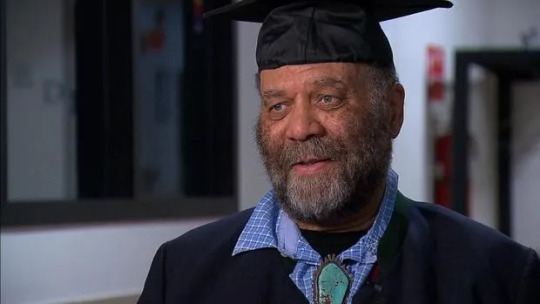
A musician who was expelled from a Denver high school over 50 years ago received his diploma. Otis Taylor was kicked out of Manual High School in 1966 because of his hair. This was decades before laws ending racial hair discrimination. Denver Public Schools wanted to right a wrong.
4. Researchers treat depression by reversing brain signals traveling the wrong way (with magnets)

A new study led by Stanford Medicine researchers is the first to reveal how magnetic stimulation treats severe depression: by correcting the abnormal flow of brain signals. Powerful magnetic pulses applied to the scalp to stimulate the brain can bring fast relief to many severely depressed patients for whom standard treatments have failed.
The FDA-cleared treatment, known as Stanford neuromodulation therapy, incorporates advanced imaging technologies to guide stimulation with high-dose patterns of magnetic pulses that can modify brain activity related to major depression. Compared with traditional TMS, which requires daily sessions over several weeks or months, SNT works on an accelerated timeline of 10 sessions each day for just five days.
5. Electricity generation through solar, wind and water exceeded total demand in mainland Spain on Tuesday, a pattern that will be repeated more and more in the future

The Spanish power grid on Tuesday tasted an appetizer of the renewable energy banquet that is expected to flourish in the coming years. For nine hours, between 10 a.m. and 7 p.m., the generation of green electricity was more than enough to cover 100% of Spanish peninsular demand, a milestone that had already been reached on previous occasions, but not for such a prolonged period.
6. RI Senate passes bill making lunch free at all public schools

Free lunch for all public school students in Rhode Island is one step closer to becoming a reality.
Tuesday night the Rhode Island Senate overwhelmingly passed a bill by a vote of 31-4 that would do just that. If the companion bill in the House were to pass, that takes effect July 1. The bill would make breakfast and lunch free for all public school students in the state, regardless of their household income.
7. Critically endangered red wolf pups born at North Carolina Zoo
The North Carolina Zoo in Asheboro celebrated the arrival of “not one but TWO litters” of the world’s most endangered wolf – the red wolf – in late April and early May.
A total of nine pups were born – three to parents Marsh and Roan, and six to Denali and May – the zoo announced on May 9.
----
That's it for this week :)
This newsletter will always be free. If you liked this post you can support me with a small kofi donation:
Buy me a coffee ❤️
Also don’t forget to reblog.
SUBCRIBE HERE for more good news in your inbox
2K notes
·
View notes
Text
I thought y'all should read this
I have a free trial to News+ so I copy-pasted it for you here. I don't think Jonathan Haidt would object to more people having this info.
Tumblr wouldn't let me post it until i removed all the links to Haidt's sources. You'll have to take my word that everything is sourced.
End the Phone-Based Childhood Now
The environment in which kids grow up today is hostile to human development.
By Jonathan Haidt
Something went suddenly and horribly wrong for adolescents in the early 2010s. By now you’ve likely seen the statistics: Rates of depression and anxiety in the United States—fairly stable in the 2000s—rose by more than 50 percent in many studies from 2010 to 2019. The suicide rate rose 48 percent for adolescents ages 10 to 19. For girls ages 10 to 14, it rose 131 percent.
The problem was not limited to the U.S.: Similar patterns emerged around the same time in Canada, the U.K., Australia, New Zealand, the Nordic countries, and beyond. By a variety of measures and in a variety of countries, the members of Generation Z (born in and after 1996) are suffering from anxiety, depression, self-harm, and related disorders at levels higher than any other generation for which we have data.
The decline in mental health is just one of many signs that something went awry. Loneliness and friendlessness among American teens began to surge around 2012. Academic achievement went down, too. According to “The Nation’s Report Card,” scores in reading and math began to decline for U.S. students after 2012, reversing decades of slow but generally steady increase. PISA, the major international measure of educational trends, shows that declines in math, reading, and science happened globally, also beginning in the early 2010s.
As the oldest members of Gen Z reach their late 20s, their troubles are carrying over into adulthood. Young adults are dating less, having less sex, and showing less interest in ever having children than prior generations. They are more likelyto live with their parents. They were less likely to get jobs as teens, and managers say they are harder to work with. Many of these trends began with earlier generations, but most of them accelerated with Gen Z.
Surveys show that members of Gen Z are shyer and more risk averse than previous generations, too, and risk aversion may make them less ambitious. In an interview last May, OpenAI co-founder Sam Altman and Stripe co-founder Patrick Collison noted that, for the first time since the 1970s, none of Silicon Valley’s preeminent entrepreneurs are under 30. “Something has really gone wrong,” Altman said. In a famously young industry, he was baffled by the sudden absence of great founders in their 20s.
Generations are not monolithic, of course. Many young people are flourishing. Taken as a whole, however, Gen Z is in poor mental health and is lagging behind previous generations on many important metrics. And if a generation is doing poorly––if it is more anxious and depressed and is starting families, careers, and important companies at a substantially lower rate than previous generations––then the sociological and economic consequences will be profound for the entire society.

What happened in the early 2010s that altered adolescent development and worsened mental health? Theories abound, but the fact that similar trends are found in many countries worldwide means that events and trends that are specific to the United States cannot be the main story.
I think the answer can be stated simply, although the underlying psychology is complex: Those were the years when adolescents in rich countries traded in their flip phones for smartphones and moved much more of their social lives online—particularly onto social-media platforms designed for virality and addiction. Once young people began carrying the entire internet in their pockets, available to them day and night, it altered their daily experiences and developmental pathways across the board. Friendship, dating, sexuality, exercise, sleep, academics, politics, family dynamics, identity—all were affected. Life changed rapidly for younger children, too, as they began to get access to their parents’ smartphones and, later, got their own iPads, laptops, and even smartphones during elementary school.
As a social psychologist who has long studied social and moral development, I have been involved in debates about the effects of digital technology for years. Typically, the scientific questions have been framed somewhat narrowly, to make them easier to address with data. For example, do adolescents who consume more social media have higher levels of depression? Does using a smartphone just before bedtime interfere with sleep? The answer to these questions is usually found to be yes, although the size of the relationship is often statistically small, which has led some researchers to conclude that these new technologies are not responsible for the gigantic increases in mental illness that began in the early 2010s.
But before we can evaluate the evidence on any one potential avenue of harm, we need to step back and ask a broader question: What is childhood––including adolescence––and how did it change when smartphones moved to the center of it? If we take a more holistic view of what childhood is and what young children, tweens, and teens need to do to mature into competent adults, the picture becomes much clearer. Smartphone-based life, it turns out, alters or interferes with a great number of developmental processes.
The intrusion of smartphones and social media are not the only changes that have deformed childhood. There’s an important backstory, beginning as long ago as the 1980s, when we started systematically depriving children and adolescents of freedom, unsupervised play, responsibility, and opportunities for risk taking, all of which promote competence, maturity, and mental health. But the change in childhood accelerated in the early 2010s, when an already independence-deprived generation was lured into a new virtual universe that seemed safe to parents but in fact is more dangerous, in many respects, than the physical world.
My claim is that the new phone-based childhood that took shape roughly 12 years ago is making young people sick and blocking their progress to flourishing in adulthood. We need a dramatic cultural correction, and we need it now.
1. The Decline of Play and Independence
Human brains are extraordinarily large compared with those of other primates, and human childhoods are extraordinarily long, too, to give those large brains time to wire up within a particular culture. A child’s brain is already 90 percent of its adult size by about age 6. The next 10 or 15 years are about learning norms and mastering skills—physical, analytical, creative, and social. As children and adolescents seek out experiences and practice a wide variety of behaviors, the synapses and neurons that are used frequently are retained while those that are used less often disappear. Neurons that fire together wire together, as brain researchers say.
Brain development is sometimes said to be “experience-expectant,” because specific parts of the brain show increased plasticity during periods of life when an animal’s brain can “expect” to have certain kinds of experiences. You can see this with baby geese, who will imprint on whatever mother-sized object moves in their vicinity just after they hatch. You can see it with human children, who are able to learn languages quickly and take on the local accent, but only through early puberty; after that, it’s hard to learn a language and sound like a native speaker. There is also some evidence of a sensitive period for cultural learning more generally. Japanese children who spent a few years in California in the 1970s came to feel “American” in their identity and ways of interacting only if they attended American schools for a few years between ages 9 and 15. If they left before age 9, there was no lasting impact. If they didn’t arrive until they were 15, it was too late; they didn’t come to feel American.
Human childhood is an extended cultural apprenticeship with different tasks at different ages all the way through puberty. Once we see it this way, we can identify factors that promote or impede the right kinds of learning at each age. For children of all ages, one of the most powerful drivers of learning is the strong motivation to play. Play is the work of childhood, and all young mammals have the same job: to wire up their brains by playing vigorously and often, practicing the moves and skills they’ll need as adults. Kittens will play-pounce on anything that looks like a mouse tail. Human children will play games such as tag and sharks and minnows, which let them practice both their predator skills and their escaping-from-predator skills. Adolescents will play sports with greater intensity, and will incorporate playfulness into their social interactions—flirting, teasing, and developing inside jokes that bond friends together. Hundreds of studies on young rats, monkeys, and humans show that young mammals want to play, need to play, and end up socially, cognitively, and emotionally impaired when they are deprived of play.
One crucial aspect of play is physical risk taking. Children and adolescents must take risks and fail—often—in environments in which failure is not very costly. This is how they extend their abilities, overcome their fears, learn to estimate risk, and learn to cooperate in order to take on larger challenges later. The ever-present possibility of getting hurt while running around, exploring, play-fighting, or getting into a real conflict with another group adds an element of thrill, and thrilling play appears to be the most effective kind for overcoming childhood anxieties and building social, emotional, and physical competence. The desire for risk and thrill increases in the teen years, when failure might carry more serious consequences. Children of all ages need to choose the risk they are ready for at a given moment. Young people who are deprived of opportunities for risk taking and independent exploration will, on average, develop into more anxious and risk-averse adults.
Human childhood and adolescence evolved outdoors, in a physical world full of dangers and opportunities. Its central activities––play, exploration, and intense socializing––were largely unsupervised by adults, allowing children to make their own choices, resolve their own conflicts, and take care of one another. Shared adventures and shared adversity bound young people together into strong friendship clusters within which they mastered the social dynamics of small groups, which prepared them to master bigger challenges and larger groups later on.
And then we changed childhood.
The changes started slowly in the late 1970s and ’80s, before the arrival of the internet, as many parents in the U.S. grew fearful that their children would be harmed or abducted if left unsupervised. Such crimes have always been extremely rare, but they loomed larger in parents’ minds thanks in part to rising levels of street crime combined with the arrival of cable TV, which enabled round-the-clock coverage of missing-children cases. A general decline in social capital––the degree to which people knew and trusted their neighbors and institutions––exacerbated parental fears. Meanwhile, rising competition for college admissions encouraged more intensive forms of parenting. In the 1990s, American parents began pulling their children indoors or insisting that afternoons be spent in adult-run enrichment activities. Free play, independent exploration, and teen-hangout time declined.
In recent decades, seeing unchaperoned children outdoors has become so novel that when one is spotted in the wild, some adults feel it is their duty to call the police. In 2015, the Pew Research Center found that parents, on average, believed that children should be at least 10 years old to play unsupervised in front of their house, and that kids should be 14 before being allowed to go unsupervised to a public park. Most of these same parents had enjoyed joyous and unsupervised outdoor play by the age of 7 or 8.
2. The Virtual World Arrives in Two Waves
The internet, which now dominates the lives of young people, arrived in two waves of linked technologies. The first one did little harm to Millennials. The second one swallowed Gen Z whole.
The first wave came ashore in the 1990s with the arrival of dial-up internet access, which made personal computers good for something beyond word processing and basic games. By 2003, 55 percent of American households had a computer with (slow) internet access. Rates of adolescent depression, loneliness, and other measures of poor mental health did not rise in this first wave. If anything, they went down a bit. Millennial teens (born 1981 through 1995), who were the first to go through puberty with access to the internet, were psychologically healthier and happier, on average, than their older siblings or parents in Generation X (born 1965 through 1980).
The second wave began to rise in the 2000s, though its full force didn’t hit until the early 2010s. It began rather innocently with the introduction of social-media platforms that helped people connect with their friends. Posting and sharing content became much easier with sites such as Friendster (launched in 2003), Myspace (2003), and Facebook (2004).
Teens embraced social media soon after it came out, but the time they could spend on these sites was limited in those early years because the sites could only be accessed from a computer, often the family computer in the living room. Young people couldn’t access social media (and the rest of the internet) from the school bus, during class time, or while hanging out with friends outdoors. Many teens in the early-to-mid-2000s had cellphones, but these were basic phones (many of them flip phones) that had no internet access. Typing on them was difficult––they had only number keys. Basic phones were tools that helped Millennials meet up with one another in person or talk with each other one-on-one. I have seen no evidence to suggest that basic cellphones harmed the mental health of Millennials.
It was not until the introduction of the iPhone (2007), the App Store (2008), and high-speed internet (which reached 50 percent of American homes in 2007)—and the corresponding pivot to mobile made by many providers of social media, video games, and porn—that it became possible for adolescents to spend nearly every waking moment online. The extraordinary synergy among these innovations was what powered the second technological wave. In 2011, only 23 percent of teens had a smartphone. By 2015, that number had risen to 73 percent, and a quarter of teens said they were online “almost constantly.” Their younger siblings in elementary school didn’t usually have their own smartphones, but after its release in 2010, the iPad quickly became a staple of young children’s daily lives. It was in this brief period, from 2010 to 2015, that childhood in America (and many other countries) was rewired into a form that was more sedentary, solitary, virtual, and incompatible with healthy human development.
3. Techno-optimism and the Birth of the Phone-Based Childhood
The phone-based childhood created by that second wave—including not just smartphones themselves, but all manner of internet-connected devices, such as tablets, laptops, video-game consoles, and smartwatches—arrived near the end of a period of enormous optimism about digital technology. The internet came into our lives in the mid-1990s, soon after the fall of the Soviet Union. By the end of that decade, it was widely thought that the web would be an ally of democracy and a slayer of tyrants. When people are connected to each other, and to all the information in the world, how could any dictator keep them down?
In the 2000s, Silicon Valley and its world-changing inventions were a source of pride and excitement in America. Smart and ambitious young people around the world wanted to move to the West Coast to be part of the digital revolution. Tech-company founders such as Steve Jobs and Sergey Brin were lauded as gods, or at least as modern Prometheans, bringing humans godlike powers. The Arab Spring bloomed in 2011 with the help of decentralized social platforms, including Twitter and Facebook. When pundits and entrepreneurs talked about the power of social media to transform society, it didn’t sound like a dark prophecy.
You have to put yourself back in this heady time to understand why adults acquiesced so readily to the rapid transformation of childhood. Many parents had concerns, even then, about what their children were doing online, especially because of the internet’s ability to put children in contact with strangers. But there was also a lot of excitement about the upsides of this new digital world. If computers and the internet were the vanguards of progress, and if young people––widely referred to as “digital natives”––were going to live their lives entwined with these technologies, then why not give them a head start? I remember how exciting it was to see my 2-year-old son master the touch-and-swipe interface of my first iPhone in 2008. I thought I could see his neurons being woven together faster as a result of the stimulation it brought to his brain, compared to the passivity of watching television or the slowness of building a block tower. I thought I could see his future job prospects improving.
Touchscreen devices were also a godsend for harried parents. Many of us discovered that we could have peace at a restaurant, on a long car trip, or at home while making dinner or replying to emails if we just gave our children what they most wanted: our smartphones and tablets. We saw that everyone else was doing it and figured it must be okay.
It was the same for older children, desperate to join their friends on social-media platforms, where the minimum age to open an account was set by law to 13, even though no research had been done to establish the safety of these products for minors. Because the platforms did nothing (and still do nothing) to verify the stated age of new-account applicants, any 10-year-old could open multiple accounts without parental permission or knowledge, and many did. Facebook and later Instagram became places where many sixth and seventh graders were hanging out and socializing. If parents did find out about these accounts, it was too late. Nobody wanted their child to be isolated and alone, so parents rarely forced their children to shut down their accounts.
We had no idea what we were doing.
4. The High Cost of a Phone-Based Childhood
In Walden, his 1854 reflection on simple living, Henry David Thoreau wrote, “The cost of a thing is the amount of … life which is required to be exchanged for it, immediately or in the long run.” It’s an elegant formulation of what economists would later call the opportunity cost of any choice—all of the things you can no longer do with your money and time once you’ve committed them to something else. So it’s important that we grasp just how much of a young person’s day is now taken up by their devices.
The numbers are hard to believe. The most recent Gallup data show that American teens spend about five hours a day just on social-media platforms (including watching videos on TikTok and YouTube). Add in all the other phone- and screen-based activities, and the number rises to somewhere between seven and nine hours a day, on average. The numbers are even higher in single-parent and low-income families, and among Black, Hispanic, and Native American families.
In Thoreau’s terms, how much of life is exchanged for all this screen time? Arguably, most of it. Everything else in an adolescent’s day must get squeezed down or eliminated entirely to make room for the vast amount of content that is consumed, and for the hundreds of “friends,” “followers,” and other network connections that must be serviced with texts, posts, comments, likes, snaps, and direct messages. I recently surveyed my students at NYU, and most of them reported that the very first thing they do when they open their eyes in the morning is check their texts, direct messages, and social-media feeds. It’s also the last thing they do before they close their eyes at night. And it’s a lot of what they do in between.
The amount of time that adolescents spend sleeping declined in the early 2010s, and many studies tie sleep loss directly to the use of devices around bedtime, particularly when they’re used to scroll through social media. Exercise declined, too, which is unfortunate because exercise, like sleep, improves both mental and physical health. Book reading has been declining for decades, pushed aside by digital alternatives, but the decline, like so much else, sped up in the early 2010s. With passive entertainment always available, adolescent minds likely wander less than they used to; contemplation and imagination might be placed on the list of things winnowed down or crowded out.
But perhaps the most devastating cost of the new phone-based childhood was the collapse of time spent interacting with other people face-to-face. A study of how Americans spend their time found that, before 2010, young people (ages 15 to 24) reported spending far more time with their friends (about two hours a day, on average, not counting time together at school) than did older people (who spent just 30 to 60 minutes with friends). Time with friends began decreasing for young people in the 2000s, but the drop accelerated in the 2010s, while it barely changed for older people. By 2019, young people’s time with friends had dropped to just 67 minutes a day. It turns out that Gen Z had been socially distancing for many years and had mostly completed the project by the time COVID-19 struck.
You might question the importance of this decline. After all, isn’t much of this online time spent interacting with friends through texting, social media, and multiplayer video games? Isn’t that just as good?
Some of it surely is, and virtual interactions offer unique benefits too, especially for young people who are geographically or socially isolated. But in general, the virtual world lacks many of the features that make human interactions in the real world nutritious, as we might say, for physical, social, and emotional development. In particular, real-world relationships and social interactions are characterized by four features—typical for hundreds of thousands of years—that online interactions either distort or erase.
First, real-world interactions are embodied, meaning that we use our hands and facial expressions to communicate, and we learn to respond to the body language of others. Virtual interactions, in contrast, mostly rely on language alone. No matter how many emojis are offered as compensation, the elimination of communication channels for which we have eons of evolutionary programming is likely to produce adults who are less comfortable and less skilled at interacting in person.
Second, real-world interactions are synchronous; they happen at the same time. As a result, we learn subtle cues about timing and conversational turn taking. Synchronous interactions make us feel closer to the other person because that’s what getting “in sync” does. Texts, posts, and many other virtual interactions lack synchrony. There is less real laughter, more room for misinterpretation, and more stress after a comment that gets no immediate response.
Third, real-world interactions primarily involve one‐to‐one communication, or sometimes one-to-several. But many virtual communications are broadcast to a potentially huge audience. Online, each person can engage in dozens of asynchronous interactions in parallel, which interferes with the depth achieved in all of them. The sender’s motivations are different, too: With a large audience, one’s reputation is always on the line; an error or poor performance can damage social standing with large numbers of peers. These communications thus tend to be more performative and anxiety-inducing than one-to-one conversations.
Finally, real-world interactions usually take place within communities that have a high bar for entry and exit, so people are strongly motivated to invest in relationships and repair rifts when they happen. But in many virtual networks, people can easily block others or quit when they are displeased. Relationships within such networks are usually more disposable.
These unsatisfying and anxiety-producing features of life online should be recognizable to most adults. Online interactions can bring out antisocial behavior that people would never display in their offline communities. But if life online takes a toll on adults, just imagine what it does to adolescents in the early years of puberty, when their “experience expectant” brains are rewiring based on feedback from their social interactions.
Kids going through puberty online are likely to experience far more social comparison, self-consciousness, public shaming, and chronic anxiety than adolescents in previous generations, which could potentially set developing brains into a habitual state of defensiveness. The brain contains systems that are specialized for approach (when opportunities beckon) and withdrawal (when threats appear or seem likely). People can be in what we might call “discover mode” or “defend mode” at any moment, but generally not both. The two systems together form a mechanism for quickly adapting to changing conditions, like a thermostat that can activate either a heating system or a cooling system as the temperature fluctuates. Some people’s internal thermostats are generally set to discover mode, and they flip into defend mode only when clear threats arise. These people tend to see the world as full of opportunities. They are happier and less anxious. Other people’s internal thermostats are generally set to defend mode, and they flip into discover mode only when they feel unusually safe. They tend to see the world as full of threats and are more prone to anxiety and depressive disorders.

A simple way to understand the differences between Gen Z and previous generations is that people born in and after 1996 have internal thermostats that were shifted toward defend mode. This is why life on college campuses changed so suddenly when Gen Z arrived, beginning around 2014. Students began requesting “safe spaces” and trigger warnings. They were highly sensitive to “microaggressions” and sometimes claimed that words were “violence.” These trends mystified those of us in older generations at the time, but in hindsight, it all makes sense. Gen Z students found words, ideas, and ambiguous social encounters more threatening than had previous generations of students because we had fundamentally altered their psychological development.
5. So Many Harms
The debate around adolescents’ use of smartphones and social media typically revolves around mental health, and understandably so. But the harms that have resulted from transforming childhood so suddenly and heedlessly go far beyondmental health. I’ve touched on some of them—social awkwardness, reduced self-confidence, and a more sedentary childhood. Here are three additional harms.
Fragmented Attention, Disrupted Learning
Staying on task while sitting at a computer is hard enough for an adult with a fully developed prefrontal cortex. It is far more difficult for adolescents in front of their laptop trying to do homework. They are probably less intrinsically motivated to stay on task. They’re certainly less able, given their undeveloped prefrontal cortex, and hence it’s easy for any company with an app to lure them away with an offer of social validation or entertainment. Their phones are pinging constantly—one study found that the typical adolescent now gets 237 notifications a day, roughly 15 every waking hour. Sustained attention is essential for doing almost anything big, creative, or valuable, yet young people find their attention chopped up into little bits by notifications offering the possibility of high-pleasure, low-effort digital experiences.
It even happens in the classroom. Studies confirm that when students have access to their phones during class time, they use them, especially for texting and checking social media, and their grades and learning suffer. This might explain why benchmark test scores began to decline in the U.S. and around the world in the early 2010s—well before the pandemic hit.
Addiction and Social Withdrawal
The neural basis of behavioral addiction to social media or video games is not exactly the same as chemical addiction to cocaine or opioids. Nonetheless, they all involve abnormally heavy and sustained activation of dopamine neurons and reward pathways. Over time, the brain adapts to these high levels of dopamine; when the child is not engaged in digital activity, their brain doesn’t have enough dopamine, and the child experiences withdrawal symptoms. These generally include anxiety, insomnia, and intense irritability. Kids with these kinds of behavioral addictions often become surly and aggressive, and withdraw from their families into their bedrooms and devices.
Social-media and gaming platforms were designed to hook users. How successful are they? How many kids suffer from digital addictions?
The main addiction risks for boys seem to be video games and porn. “Internet gaming disorder,” which was added to the main diagnosis manual of psychiatry in 2013 as a condition for further study, describes “significant impairment or distress” in several aspects of life, along with many hallmarks of addiction, including an inability to reduce usage despite attempts to do so. Estimates for the prevalence of IGD range from 7 to 15 percent among adolescent boys and young men. As for porn, a nationally representative survey of American adults published in 2019 found that 7 percent of American men agreed or strongly agreed with the statement “I am addicted to pornography”—and the rates were higher for the youngest men.
Girls have much lower rates of addiction to video games and porn, but they use social media more intensely than boys do. A study of teens in 29 nations found that between 5 and 15 percent of adolescents engage in what is called “problematic social media use,” which includes symptoms such as preoccupation, withdrawal symptoms, neglect of other areas of life, and lying to parents and friends about time spent on social media. That study did not break down results by gender, but many others have found that rates of “problematic use” are higher for girls.
I don’t want to overstate the risks: Most teens do not become addicted to their phones and video games. But across multiple studies and across genders, rates of problematic use come out in the ballpark of 5 to 15 percent. Is there any other consumer product that parents would let their children use relatively freely if they knew that something like one in 10 kids would end up with a pattern of habitual and compulsive use that disrupted various domains of life and looked a lot like an addiction?
The Decay of Wisdom and the Loss of Meaning
During that crucial sensitive period for cultural learning, from roughly ages 9 through 15, we should be especially thoughtful about who is socializing our children for adulthood. Instead, that’s when most kids get their first smartphone and sign themselves up (with or without parental permission) to consume rivers of content from random strangers. Much of that content is produced by other adolescents, in blocks of a few minutes or a few seconds.
This rerouting of enculturating content has created a generation that is largely cut off from older generations and, to some extent, from the accumulated wisdom of humankind, including knowledge about how to live a flourishing life. Adolescents spend less time steeped in their local or national culture. They are coming of age in a confusing, placeless, ahistorical maelstrom of 30-second stories curated by algorithms designed to mesmerize them. Without solid knowledge of the past and the filtering of good ideas from bad––a process that plays out over many generations––young people will be more prone to believe whatever terrible ideas become popular around them, which might explain why videos showing young people reacting positively to Osama bin Laden’s thoughts about America were trending on TikTok last fall.
All this is made worse by the fact that so much of digital public life is an unending supply of micro dramas about somebody somewhere in our country of 340 million people who did something that can fuel an outrage cycle, only to be pushed aside by the next. It doesn’t add up to anything and leaves behind only a distorted sense of human nature and affairs.
When our public life becomes fragmented, ephemeral, and incomprehensible, it is a recipe for anomie, or normlessness. The great French sociologist Émile Durkheim showed long ago that a society that fails to bind its people together with some shared sense of sacredness and common respect for rules and norms is not a society of great individual freedom; it is, rather, a place where disoriented individuals have difficulty setting goals and exerting themselves to achieve them. Durkheim argued that anomie was a major driver of suicide rates in European countries. Modern scholars continue to draw on his work to understand suicide rates today.
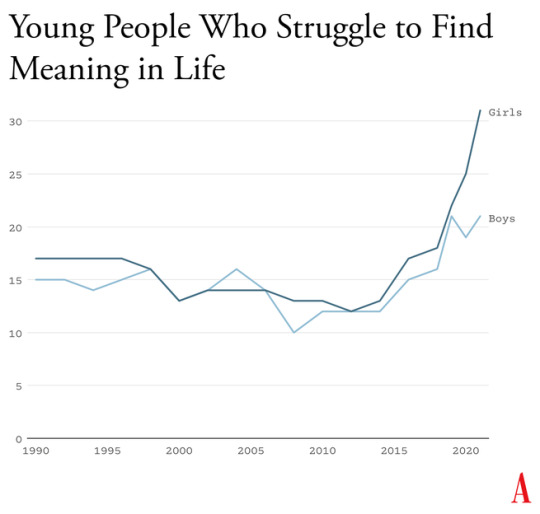
Durkheim’s observations are crucial for understanding what happened in the early 2010s. A long-running survey of American teens found that, from 1990 to 2010, high-school seniors became slightly less likely to agree with statements such as “Life often feels meaningless.” But as soon as they adopted a phone-based life and many began to live in the whirlpool of social media, where no stability can be found, every measure of despair increased. From 2010 to 2019, the number who agreed that their lives felt “meaningless” increased by about 70 percent, to more than one in five.
6. Young People Don’t Like Their Phone-Based Lives
How can I be confident that the epidemic of adolescent mental illness was kicked off by the arrival of the phone-based childhood? Skeptics point to other events as possible culprits, including the 2008 global financial crisis, global warming, the 2012 Sandy Hook school shooting and the subsequent active-shooter drills, rising academic pressures, and the opioid epidemic. But while these events might have been contributing factors in some countries, none can explain both the timing and international scope of the disaster.
An additional source of evidence comes from Gen Z itself. With all the talk of regulating social media, raising age limits, and getting phones out of schools, you might expect to find many members of Gen Z writing and speaking out in opposition. I’ve looked for such arguments and found hardly any. In contrast, many young adults tell stories of devastation.
Freya India, a 24-year-old British essayist who writes about girls, explains how social-media sites carry girls off to unhealthy places: “It seems like your child is simply watching some makeup tutorials, following some mental health influencers, or experimenting with their identity. But let me tell you: they are on a conveyor belt to someplace bad. Whatever insecurity or vulnerability they are struggling with, they will be pushed further and further into it.” She continues:
Gen Z were the guinea pigs in this uncontrolled global social experiment. We were the first to have our vulnerabilities and insecurities fed into a machine that magnified and refracted them back at us, all the time, before we had any sense of who we were. We didn’t just grow up with algorithms. They raised us. They rearranged our faces. Shaped our identities. Convinced us we were sick.
Rikki Schlott, a 23-year-old American journalist and co-author of The Canceling of the American Mind, writes,
"The day-to-day life of a typical teen or tween today would be unrecognizable to someone who came of age before the smartphone arrived. Zoomers are spending an average of 9 hours daily in this screen-time doom loop—desperate to forget the gaping holes they’re bleeding out of, even if just for … 9 hours a day. Uncomfortable silence could be time to ponder why they’re so miserable in the first place. Drowning it out with algorithmic white noise is far easier."
A 27-year-old man who spent his adolescent years addicted (his word) to video games and pornography sent me this reflection on what that did to him:
I missed out on a lot of stuff in life—a lot of socialization. I feel the effects now: meeting new people, talking to people. I feel that my interactions are not as smooth and fluid as I want. My knowledge of the world (geography, politics, etc.) is lacking. I didn’t spend time having conversations or learning about sports. I often feel like a hollow operating system.
Or consider what Facebook found in a research project involving focus groups of young people, revealed in 2021 by the whistleblower Frances Haugen: “Teens blame Instagram for increases in the rates of anxiety and depression among teens,” an internal document said. “This reaction was unprompted and consistent across all groups.”
7. Collective-Action Problems
Social-media companies such as Meta, TikTok, and Snap are often compared to tobacco companies, but that’s not really fair to the tobacco industry. It’s true that companies in both industries marketed harmful products to children and tweaked their products for maximum customer retention (that is, addiction), but there’s a big difference: Teens could and did choose, in large numbers, not to smoke. Even at the peak of teen cigarette use, in 1997, nearly two-thirds of high-school students did not smoke.
Social media, in contrast, applies a lot more pressure on nonusers, at a much younger age and in a more insidious way. Once a few students in any middle school lie about their age and open accounts at age 11 or 12, they start posting photos and comments about themselves and other students. Drama ensues. The pressure on everyone else to join becomes intense. Even a girl who knows, consciously, that Instagram can foster beauty obsession, anxiety, and eating disorders might sooner take those risks than accept the seeming certainty of being out of the loop, clueless, and excluded. And indeed, if she resists while most of her classmates do not, she might, in fact, be marginalized, which puts her at risk for anxiety and depression, though via a different pathway than the one taken by those who use social media heavily. In this way, social media accomplishes a remarkable feat: It even harms adolescents who do not use it.
A recent study led by the University of Chicago economist Leonardo Bursztyn captured the dynamics of the social-media trap precisely. The researchers recruited more than 1,000 college students and asked them how much they’d need to be paid to deactivate their accounts on either Instagram or TikTok for four weeks. That’s a standard economist’s question to try to compute the net value of a product to society. On average, students said they’d need to be paid roughly $50 ($59 for TikTok, $47 for Instagram) to deactivate whichever platform they were asked about. Then the experimenters told the students that they were going to try to get most of the others in their school to deactivate that same platform, offering to pay them to do so as well, and asked, Now how much would you have to be paid to deactivate, if most others did so? The answer, on average, was less than zero. In each case, most students were willing to pay to have that happen.
Social media is all about network effects. Most students are only on it because everyone else is too. Most of them would prefer that nobody be on these platforms. Later in the study, students were asked directly, “Would you prefer to live in a world without Instagram [or TikTok]?” A majority of students said yes––58 percent for each app.
This is the textbook definition of what social scientists call a collective-action problem. It’s what happens when a group would be better off if everyone in the group took a particular action, but each actor is deterred from acting, because unless the others do the same, the personal cost outweighs the benefit. Fishermen considering limiting their catch to avoid wiping out the local fish population are caught in this same kind of trap. If no one else does it too, they just lose profit.
Cigarettes trapped individual smokers with a biological addiction. Social media has trapped an entire generation in a collective-action problem. Early app developers deliberately and knowingly exploited the psychological weaknesses and insecurities of young people to pressure them to consume a product that, upon reflection, many wish they could use less, or not at all.
8. Four Norms to Break Four Traps
Young people and their parents are stuck in at least four collective-action traps. Each is hard to escape for an individual family, but escape becomes much easier if families, schools, and communities coordinate and act together. Here are four norms that would roll back the phone-based childhood. I believe that any community that adopts all four will see substantial improvements in youth mental health within two years.
No smartphones before high school
The trap here is that each child thinks they need a smartphone because “everyone else” has one, and many parents give in because they don’t want their child to feel excluded. But if no one else had a smartphone—or even if, say, only half of the child’s sixth-grade class had one—parents would feel more comfortable providing a basic flip phone (or no phone at all). Delaying round-the-clock internet access until ninth grade (around age 14) as a national or community norm would help to protect adolescents during the very vulnerable first few years of puberty. According to a 2022 British study, these are the years when social-media use is most correlated with poor mental health. Family policies about tablets, laptops, and video-game consoles should be aligned with smartphone restrictions to prevent overuse of other screen activities.
No social media before 16
The trap here, as with smartphones, is that each adolescent feels a strong need to open accounts on TikTok, Instagram, Snapchat, and other platforms primarily because that’s where most of their peers are posting and gossiping. But if the majority of adolescents were not on these accounts until they were 16, families and adolescents could more easily resist the pressure to sign up. The delay would not mean that kids younger than 16 could never watch videos on TikTok or YouTube—only that they could not open accounts, give away their data, post their own content, and let algorithms get to know them and their preferences.
Phone‐free schools
Most schools claim that they ban phones, but this usually just means that students aren’t supposed to take their phone out of their pocket during class. Research shows that most students do use their phones during class time. They also use them during lunchtime, free periods, and breaks between classes––times when students could and should be interacting with their classmates face-to-face. The only way to get students’ minds off their phones during the school day is to require all students to put their phones (and other devices that can send or receive texts) into a phone locker or locked pouch at the start of the day. Schools that have gone phone-free always seem to report that it has improved the culture, making students more attentive in class and more interactive with one another. Published studies back them up.
More independence, free play, and responsibility in the real world
Many parents are afraid to give their children the level of independence and responsibility they themselves enjoyed when they were young, even though rates of homicide, drunk driving, and other physical threats to children are way down in recent decades. Part of the fear comes from the fact that parents look at each other to determine what is normal and therefore safe, and they see few examples of families acting as if a 9-year-old can be trusted to walk to a store without a chaperone. But if many parents started sending their children out to play or run errands, then the norms of what is safe and accepted would change quickly. So would ideas about what constitutes “good parenting.” And if more parents trusted their children with more responsibility––for example, by asking their kids to do more to help out, or to care for others––then the pervasive sense of uselessness now found in surveys of high-school students might begin to dissipate.
It would be a mistake to overlook this fourth norm. If parents don’t replace screen time with real-world experiences involving friends and independent activity, then banning devices will feel like deprivation, not the opening up of a world of opportunities.
The main reason why the phone-based childhood is so harmful is because it pushes aside everything else. Smartphones are experience blockers. Our ultimate goal should not be to remove screens entirely, nor should it be to return childhood to exactly the way it was in 1960. Rather, it should be to create a version of childhood and adolescence that keeps young people anchored in the real world while flourishing in the digital age.
9. What Are We Waiting For?
An essential function of government is to solve collective-action problems. Congress could solve or help solve the ones I’ve highlighted—for instance, by raising the age of “internet adulthood” to 16 and requiring tech companies to keep underage children off their sites.
In recent decades, however, Congress has not been good at addressing public concerns when the solutions would displease a powerful and deep-pocketed industry. Governors and state legislators have been much more effective, and their successes might let us evaluate how well various reforms work. But the bottom line is that to change norms, we’re going to need to do most of the work ourselves, in neighborhood groups, schools, and other communities.
There are now hundreds of organizations––most of them started by mothers who saw what smartphones had done to their children––that are working to roll back the phone-based childhood or promote a more independent, real-world childhood. (I have assembled a list of many of them.) One that I co-founded, at LetGrow.org, suggests a variety of simple programs for parents or schools, such as play club (schools keep the playground open at least one day a week before or after school, and kids sign up for phone-free, mixed-age, unstructured play as a regular weekly activity) and the Let Grow Experience (a series of homework assignments in which students––with their parents’ consent––choose something to do on their own that they’ve never done before, such as walk the dog, climb a tree, walk to a store, or cook dinner).
Parents are fed up with what childhood has become. Many are tired of having daily arguments about technologies that were designed to grab hold of their children’s attention and not let go. But the phone-based childhood is not inevitable.
The four norms I have proposed cost almost nothing to implement, they cause no clear harm to anyone, and while they could be supported by new legislation, they can be instilled even without it. We can begin implementing all of them right away, this year, especially in communities with good cooperation between schools and parents. A single memo from a principal asking parents to delay smartphones and social media, in support of the school’s effort to improve mental health by going phone free, would catalyze collective action and reset the community’s norms.
We didn’t know what we were doing in the early 2010s. Now we do. It’s time to end the phone-based childhood.
This article is adapted from Jonathan Haidt’s forthcoming book, The Anxious Generation: How the Great Rewiring of Childhood Is Causing an Epidemic of Mental Illness.
218 notes
·
View notes
Note
for the polar history recap posts, i’m dying to know more about lillie…deeply tragic and i’ve also heard something about the nickname ‘ooze’ and i desperately need to know more about that
LILLIE 😭😭😭😭😭😭❤️❤️❤️❤️❤️

denis (also spelled dennis) gascoigne lillie was born in 1884, making him 26 when the terra nova set off for antarctica. he was trained in natural sciences at cambridge (although he didn't do too well on his exams) and was appointed as the ship's biologist—meaning he did not form part of the shore party in the hut in at cape evans, but remained on board the ship during the winter, studying antarctic marine biology including whales, plankton, and deep-sea creatures like sponges (like the one pictured above). his nickname "ooze" comes from his job as biologist—ooze refers to a specific kind of biological marine sediment that got pulled up in seabed dredges which lillie would then examine.
in silas's diary on the voyage south, he describes lillie:
Lilley—"Hercules'" or "Sequins" is rather a dreamer and asserts he can remember his former existences in this world. Much fun can be got from him if handled properly.
lillie was noted by other members of the expedition to be a bit of a crackpot, asserting that he was a persian and a roman in his past lives. and more than that, possibly:
Lillie had decided that he was not the marrying type, claiming that he had evolved beyond it. In later years Scott’s young Norwegian skiing expert Tryggve Gran recounted that as they crossed the Equator on the Terra Nova Lillie had revealed that he was a woman trapped in a man’s body. ‘When I see a naked man I blush,’ he allegedly said as the others sprawled shirtless on the deck in tropical sunshine, ‘I am split and I can’t help it. Luckily I understand myself and have the control to avoid doing anything wrong.’ Gran was a notoriously unreliable source, and it is hard to imagine anyone having the courage to say that under those circumstances; but perhaps Lillie did.
(from sara wheeler's cherry)
usually i would not recommend anyone trust anything that comes out of gran's mouth, but honestly i do buy this, because, well... vibes.
anyway, on the terra nova, lillie was notable for his talent at caricature, and several of his rather hilariously cruel drawings appeared (copied by wilson) in the south polar times, including this one of birdie:

while the shore party was in antarctica, lillie spent two winters in new zealand studying whales, fossils, and anthropology:
Lillie has been fossilizing & is off next month for 5 months whaling with the Norwegians. He is looking very well & very happy and is ‘a dear little chap’ to use Scott’s expression.
—pennell's diary, may 18 1911
after returning to england, taking the long way round on board the terra nova to continue his marine research, lillie took up residence at cambridge again, alongside deb, silas, priestley, and griff, to work up the scientific results from the expedition.
lillie also spent a lot of time with atch and pennell in 1913, frequently accompanying them to dine and see theater in london. he also drew (probably on board the ship) the caricature of them as the "antarctic lovebirds":

during the war, he was a conscientious objector—a "conchie," refusing to go to the front. it was an incredibly difficult position to maintain in the face of widespread societal opposition. he found solace in a continued and deepening relationship with cherry (who was also not at the front, though in his case for health reasons) as sara wheeler describes in her biography of cherry:
Currently working as a bacteriologist for the military, Lillie had been one of the few visitors at Lamer during the bad months in the middle of 1916. They became unusually intimate (‘I should love to see your chubby cheeks again’), and after one weekend Lillie scrawled with typical irreverence in his note of thanks that, ‘It was only my body which left you, for my ultimate Reality still walks behind your Bath chair and meditates about the many paths of your lovely garden. With love.’
and god i just need to copy these entire sections from the wheeler in here because they make me want to sob:
In September 1916 he had been transferred to the pathology lab of a military hospital in Bournemouth, which he loathed (‘no nice cliffs or sea birds, only sand banks and orange peel’), and was appalled to learn the next year that Cherry was poised to become engaged to Christine Davis (‘being unconventional and as near to nature as I can get, it seems all wrong to me that you should have to tie yourself up for the sake of Society’), but he strove, generally, to be optimistic, whereas Cherry was permanently resigned to his destiny. In August 1917 Lillie returned to Lamer for a week. Writing in advance with details of his train to Hatfield, he concluded that, ‘if a motor does not turn up the wings of joy will waft me those four-and-a-half miles bag included. So don’t worry.’ They had a wonderful time together. ‘I do hope,’ Lillie wrote when he was back in horrible Bournemouth, ��your throat and the rest of you continues to get well and worthy of the sunny spirit which I see under the label ACG.'
though things seemed to be going as well as they could for lillie, shortly before the end of the war in early 1918, he suffered a nervous breakdown and landed in the notorious bethlem mental institution, known as bedlam. he was there for three years, and cherry was barred from visiting him.
he emerged for a short period of time in 1921, seemingly recovered, and took up lecturing in biology again at cambridge, but by the end of that year had relapsed and was institutionalized again.
frank debenham, writing to expedition agent j.j. kinsey in 1927 to solicit funding for SPRI, gave him an update:
Poor old Lillie is in less happy circumstances, the last I heard of him was that he was never likely to get out of Bedlam, a rather ghastly end up for poor old "Ooze's" brilliant promise.
lillie spent the rest of his life in institutions, and lived until the age of 78, dying in 1963. that was four years after the death of his friend cherry—who, despite constant attempts, was never allowed to visit him.
per UK law, lillie's medical records will be sealed until 2063, 100 years after his death, but a post on bethlem's official blog about lillie briefly notes that he was "depressed, delusional and suicidal."
the post also notes, importantly, that his breakdown had nothing whatsoever to do with his antarctic experiences:
The content of his medical notes suggests that the state of mind that brought him to hospital was entirely unrelated to his experiences of 1910-1913. Indeed, they report that “on the whole he felt better during this time”.
OK, let's end on a nice note. here's a picture of him having a nice time at silas's wedding (i think) with his best friends. RIP lillie, i hope your next life is going well somewhere out there right now 🥲💓
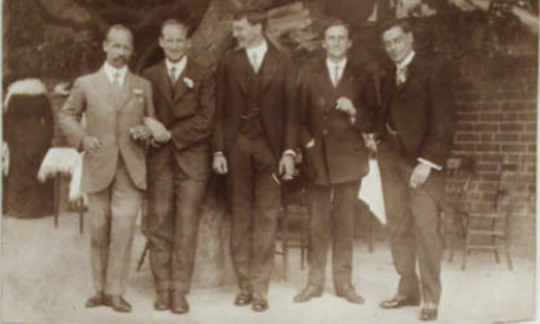
(also another good writeup on lillie with some lovely art can be found on @worstjourney's patreon here!)
98 notes
·
View notes
Text
A Brief History of Flamingos
People wanted it so here it is, a brief rundown of flamingos throughout prehistory, which is essentially a brief summary of extinct flamingo species that I worked on for Wikipedia. Because of this, I'll stick to the two main famillies, the Palaeolodidae ("swimming flamingos") and Phoenicopteridae (true flamingos) and leave aside the misc. early forms we don't know are actually related or not.
Palaelodidae Palaelodids, occasionally referred to as "swimming flamingos" are an interesting and surprisingly long lasting group, containing 3 genera, 10 species and ranging from the Oligocene to the Pleistocene across all continents bar Africa and Antarctica.
The oldest palaelodid is Adelalopus hoogbutseliensis from the Early Oligocene of Belgium. Not much to be said other than that its name is an anagram of Palaelodus.
Palaelodus is the most widespread of the genera in the family, with the type species being Palaelodus ambiguus from the Oligocene and Miocene of Europe. I did actually make a whole post about the genus before here. Anyways, P. ambiguus is the best known species thanks to the ample material collected at Saint-Gérand-le-Puy, France. Remains were also found in Germany and maybe Brazil?
Brazil is interesting, because already by the Oligocene palaelodids were nearly cosmopolitan. Two other species, Palaelodus pledgei and Palaelodus wilsoni, have been recovered from the Oligocene to Miocene of Australia, half a world away from P. ambiguus. P. pledgei is the smallest known species of Palaelodus.
During the early Miocene we also get Palaelodus aotearoa, from New Zealand, and from the middle Miocene Palaelodus kurochkini from Mongolia. The later of the two may in fact be its own genus, but for now its deemed Palaelodus.
Generally, Palaelodus is less specialised than flamingos, though living in brackish waters and feeding on small aquatic insects, they didn't yet have the same suffisticated filter feeding bill as todays flamingos. Whats debated is how they moved. Some suggest wading, others diving and again others propose the idea that they may have been swimmers.
There is one more note on this group, which is that there are some remains assigned to P. wilsoni that appear to have been Pleistocene in age? Obviously this would be a massive deal, but it has also been suggested that this could be a new species given the time gap or a whole new genus. Still, palaelodid remains from the Pleistocene are still incredible. Palaelodus by Alphinyx and Tom Simpson


The last member of the Palaelodidae is Megapaloelodus. Yes they misspelled Palaelodus in the genus name. The definition of this form is kinda vague and mostly based on size, which is why there's so many issues around Megapaloelodus goliath. You see it was initially described based on its size, but when larger remains of Megapaloelodus were found it was transferred to that genus. However, all other Megapaloelodus species are from the Americas, so thats kinda odd, although of course not a dealbreaker. Still, future research might change things up here.
While Megapaloelodus goliath was contemporary and found at the same place as Palaelodus ambiguus, all others are found in Miocene to Pliocene deposits of America.
Megapaloelodus connectens is the type species and known from the Miocene of South Dakota and California.
Megapaloelodus peiranoi may be the basalmost species and was discovered in Miocene deposits of Argentina.
Finally, we got Megapaloelodus opsigonus from Oregon and possibly Baja California. As this is the youngest species, from the Pliocene, its name means "born in a later age".
Megapaloelodus by Joschua Knüppe (with Argentavis) and Scott Reid

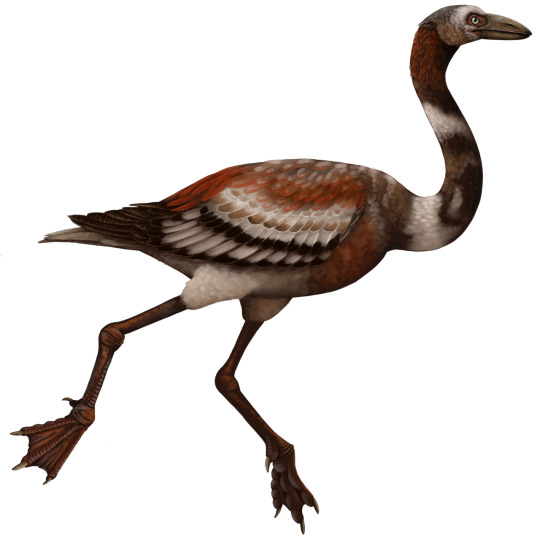
Which actually wraps up palaelodids. Yeah the majority of studies are focused on palaelodids, no surprise given its the only one with really good remains. But based on said animal, its a fascinating group.
This means we can move on to true flamingos, members of the family Phoenicopteridae. I hope you like that name btw, because goddamn "Phoenico" is an overused prefix for these animals to a ridiculous degree. Even I struggled keeping up.
Just to set the stage, lets establish the modern flamingos, split into two to three genera. There is the Lesser Flamingo (Phoeniconaias minor), the only extant member of its genus and native to Africa and Asia. There are two species of Phoenicoparrus, the Andean and Jame's flamingos (Phoenicoparrus andinus and Phoenicoparrus jamesi respectively), both endemic to South America. And then there's the three species of Phoenicopterus. The incredibly whidespread Greater Flamingo (Phoenicopterus roseus), the American Flamingo (Phoenicopterus ruber) and the Chilean Flamingo (Phoenicopterus chilensis). As if the Greater and American flamingos didn't already have latin names way too similar, they were also synonyms for a while so thats fun when they get brought up in old papers.
Chart of living flamingos by Mr. Gharial

Anyways, lets reset to the Oligocene and do this semi-chronologically as before. And yes, Oligocene. Because contrary to what you might think, palaelodids, as we currently think of them as, aren't the ancestors to flamingos and more a really weird sister group that appeared from the same common ancestor aroundt he same time.
Thankfully, we get to start with something fun and not confusing, Harrisonavis croizeti. Another one I did actually cover in detail on Tumblr right here. The short of it is that Harrisonavis already bears the hallmarks of modern flamingos, possessing that classic curved bill and certainly doing some filter feeding already. And if you paid attention you might recognize where its from. Saint-Gérand-le-Puy, France. Yup, this guy coexisted with Palaelodus and Megapaloelodus. Must have been a fascinating place.
Harrisonavis and Palaelodus by Joschua Knüppe

Of course this being a well known form, we gotta follow it up with something bad. Elornis is, simply put, a mess. We aren't even super sure if its a flamingo or not and its history is convoluted. All we can say for sure is that it lived during the late Oligocene in France.
Like palaelodids, true flamingos seem to have dispersed rapidly, as our next entry managed to reach Australia by the late Oligocene. Phoeniconotius eyerensis, I repeat that one, PhoenicoNOTIUS (you see what I mean with things getting confusing?) is a genus from the Lake Eyre Basin of South Australia. It was a comparably robust animal, much more massive than other flamingos and perhaps more of a wader than a swimmer, staying away from deeper waters?
Same time same place we got Phoenicopterus novaehollandiae. PhoenicoPTERUS, as in the same genus as American and Greater flamingos. Now this guy sticks mostly to the same stuff as its relatives, thus differing clearly from Phoeniconotius.
Phoeniconotius (foreground), Phoenicopterus novaehollandiae (?, middle) and palaeolids (background) by Frank Knight, Phoeniconotius by Anne Musser


We can now move into the Miocene. We get a brief break from Phoenico names courtesy of Leakeyornis aethiopicus from Kenya. Tho its not super well preserved, its among the few fossil flamingos with known skull remains, so thats gotta count for something.
Skeletal by me, art by Joschua Knüppe
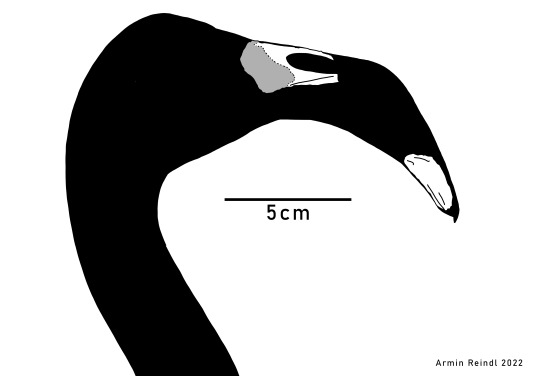
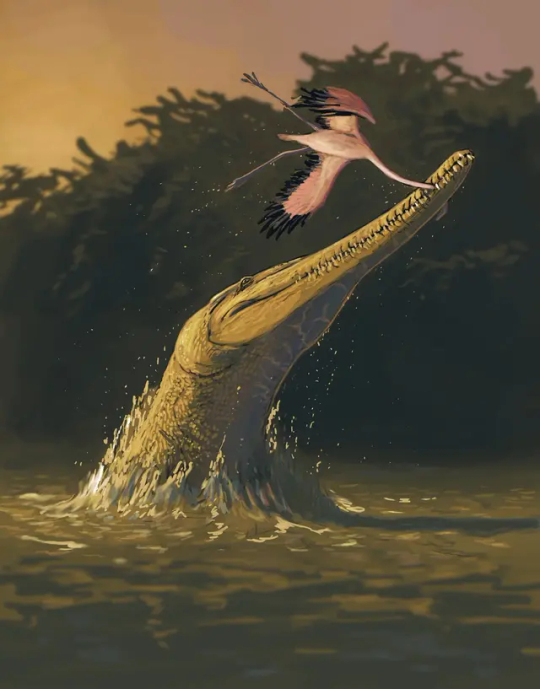
Also during the Miocene, we get the appearance of the genus Phoeniconaias (PhoenicoNAIAS) thanks to Phoeniconaias siamensis. A small species, only slightly larger than today's Lesser Flamingo, its remains are exclusively known from the Mae Long Reservoir in northern Thailand.
Fossil material of P. siamensis alongside a Lesser Flamingo via เบิร์ดโบราณ - Ancient bird on Facebook
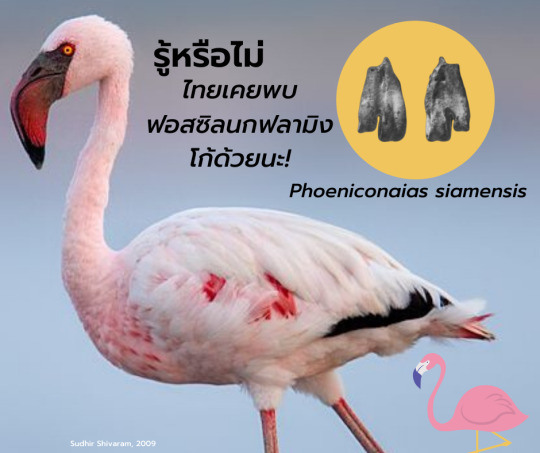
And already we find ourselves in the Pliocene. Oh how time flies. Lets wrap up known fossil species of Phoeniconaias then while we're at it. Phoeniconaias proeses is a species from Australia. Unlike our friend from Thailand, this one is actually smaller than its modern relative. It also coexisted with two other flamingos. Fossils from the region have been assigned to the Greater Flamingo and one other form we'll cover next.
Xenorhynchopsis. Our last truly original name. Xenorhynchopsis minor is the older of the two, Pliocene in age and the species I just alluded to earlier. The genus then went on to continue into the Pleistocene via Xenorhynchopsis tibialis. Neither is especially well known and both had been named by de Vis, who while no doubt an important contributor to Australian paleontology also had plenty of flaws I'll discuss soon with my next post on mekosuchines. Anyways, Xenorhynchopsis has a cool name, a confusing history (they were described as storks) and likely died out when the inland waterways of Australia dried up.
Its all downhill from here folks. It's all PhoenicoPTERUS from now on and none of them are especially good. Lets rewind to the Pliocene to cover them properly.
We got Phoenicopterus floridanus from the early Pliocene of, who guessed it, Florida. It may have also inhabited North Carolina.
Phoenicopterus stocki, or Stock's Flamingo, lived during the middle Pliocene in Mexico. Tho not well described, we got juvenile remains too, young individuals that were not yet capable of flight.
Finally we got two Pleistocene species.
Phoenicopterus minutus from California, specifically Lake Manix. Lake Manix also yielded fossils tentatively assigned to the other Pleistocene fossil species.
Phoenicopterus copei. While fossils of P. minutus are currently exclusive to Lake Manix, P. copei was more widespread, ranging from Mexico in the south to Oregon in the north as well as California in the west and Florida in the east. Where it coexisted with other flamingos, like P. minutus and American flamingos, it would have been the larger species.
And thats it. All the fossil flamingos of the Palaelodidae and Phoenicopteridae. Alas, bird fossils preserve notoriously poorly and though stuff like the ends of tibiatarsi and tarsometatarsi are diagnostic, they aren't super helpful to making them sound interesting to the average joe. So sorry if this whole post is a little dry in spots.
#palaelodidae#phoenicopteridae#palaelodus#megapaloelodus#adelolepus#leakeyornis#harrisonavis#elornis#phoenicopterus#phoenicoparrus#phoeniconaias#phoeniconotius#xenorhynchopsis#palaeoblr#paleontology#prehistory#oligocene#miocene#pliocene#pleistocene#cenozoic#flamingo#phoenicopteriformes#long post
164 notes
·
View notes
Text
Are you a student studying in New Zealand or considering studying there? It’s important to understand the Post Study Work Visa New Zealand and its requirements. Unlock your career potential with PSWV. Learn all you need to know about eligibility and application process.
0 notes
Text
Unlocking Opportunities: Post Study Work Visa in New Zealand

Discover the benefits of the Post Study Work Visa in New Zealand with Immigration Adviser New Zealand. https://nzimmigration.info/work-visa/post-study-work-visa/
#post study work visa new zealand#post study work visa nz#Post study work right qualification in New Zealand#apply post study work visa nz
0 notes
Text
#student visa NZ#post-study work visa#partner of a student work visa#nz immigration#immigration new zealand#immigration nz#new zealand immigration#resident visa nz
0 notes
Text
02/29/2024 Daily OFMD Recap
TLDR; Cast & Crew Sightings; VicoOrtiz; Gypsy Taylor; Samba Schutte; How to Help: Ranker Polls; BBC News; New Appreciation Events; Rhys' 50th Birthday; NewarkNewark Watch Party with @adoptourcrew; Watch Party Reminders; PeopleOfEarth; TheseThems; SaveOFMDCrew; Calendar;Fundraiser Goals; LeapDayBingo; FanSpotlight; Collages;Trading Cards; LoveNotes; Daily Darby/Tonight's Taika
= Cast&Crew Sightings =
= Vico Ortiz =
Sorry were you planning on getting anything done today?
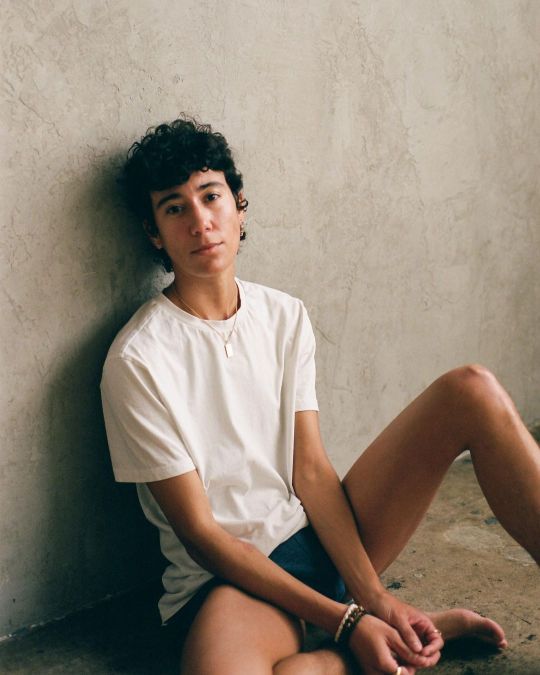



Vico has so much going on! "These Flowers Might Be Ours" read by Vico is available now on Amazon.co.uk!
Also too, ActNow: LA's LQBTQ+ Acting Class will be doing a scene study with Vico starting March 10th!


= Gypsy Taylor =
Our favourite costume designed Gypsy Taylor was interviewed by @screenaustralia! Check out the Podcast episode here. Src: Gypsy's Instagram


= Samba Schutte =
Just a little celebration of Leap Day!

== How to Help ==
Polls are still up! So that Ranker poll is still there! It's still taking responses, please feel free to stop in and push OFMD up! (You could even do it on multiple browsers!... not that I'd recommend something like that). Our friend @patchworkpiratebear was kind enough to make a helpful infographic since it is a bit of a goofy set up. Link to the Ranking
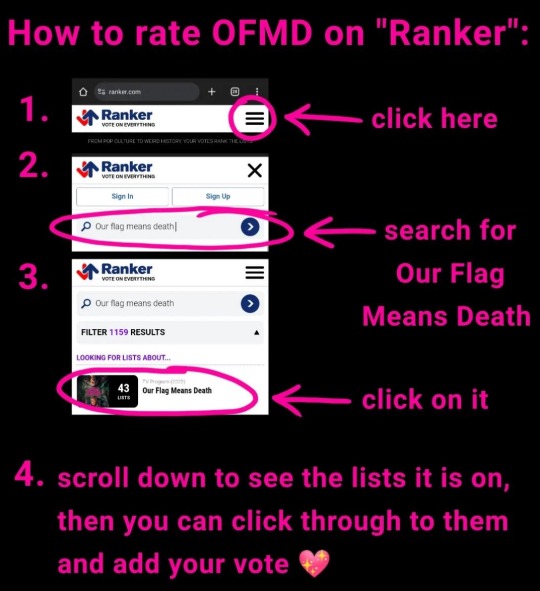
Step 5: You can actually rank the other shows and they still affect the ranking of OFMD.
== BBC News ==
So this was a cool catch by @queerly-autistic, our friend over here on tumblr and twitter. "A Pirate Comedy with a cult following". Talk about making noise!
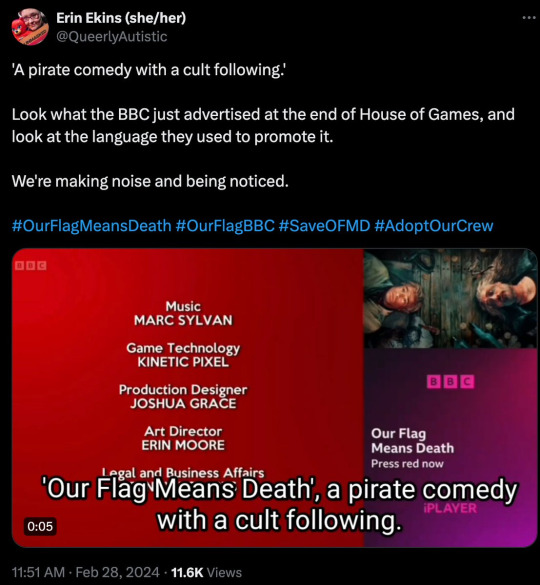
I know I've seen several asks lately regarding whether or not the time slot change for OFMD on BBC was a good or a bad thing. @queerly-autistic had some great insight on this. Please check out their thread here. "It's a really great slot to have the show advertised in, and I was so surprised and thrilled to see them giving it that space (and specifically pushing people to watch it on iPlayer)"
== New Appreciation Events! ==
March 21: Rhys' 50th Birthday
Do you have prepared best wishes for our pirate captain?
Use the hashtag #youwear50well in your social media posts! Also, here's a neat list of time zones to ensure our birthday wishes will be the first thing Rhys sees (depending on whether he's in NZ or LA at that time!) Tweet/Insta at the times of your zone to ensure timely impact.
12 AM on March 21 in New Zealand is:
12 PM on March 20 for AEDT/Sydney
11 AM on March 20 for GMT/London
7 AM on March 20 for EST/New York
12 AM on March 21 in LA is:
6 PM on March 20 for AEDT/Sydney
7 AM on March 21 for GMT/London
3 AM on March 21 for EST/New York
Thank you so much to our lovely friend @yronnia and all the other folks working on this project! Super cool!
= More Watch Parties! =
Please join @adoptourcrew for a @NewarkNewark watch party on March 5th at 10 pm GMT/ 2pm PS / 5pm EST!

== Watch Party Reminders! ==
Coming down to the end of s2 Friends! #People Of Earth continues tomorrow and then a whole rewatch on Saturday! 10 pm GMT / 5pm EST / 4pm CST / 2pm PST!

= Mar 1: THESE THEMS WATCH PARTY =
Join @adoptourcrew on Friday 3/1 for a watch party of #TheseThems! Times haven't been secured quite yet but mark your calendars!
Watch Party Hashtags:
#TheseThems
#These Gems
#AdoptOurCrew
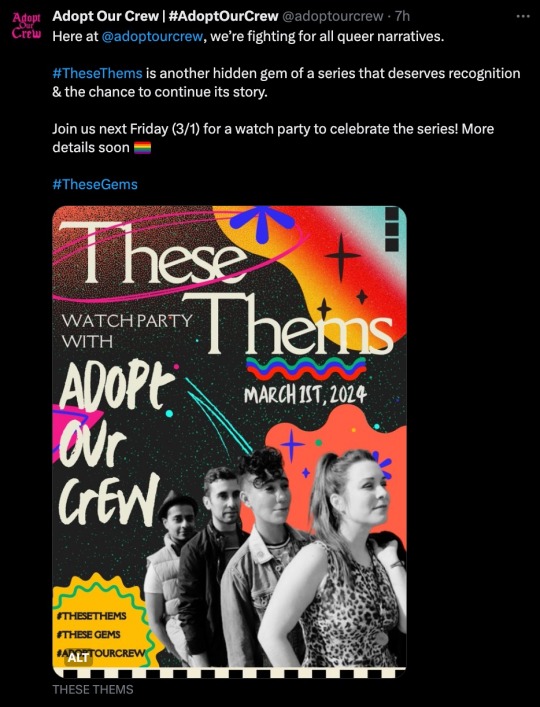
== Save OFMD Crew ==
= Calendar =
Tomorrow is #ImmoderateCitrus Day! (National Sunkist Citrus Day in the US). Feel free to reach out to the @saveofmdcrewmates about citrus-related faves: food, drink, clothing, recipes, or art!

= UK Advertising Fundraiser =

The truck stretch goal was met! The final stretch goal is getting petitions up in the tube in the UK! As always friends, donating is not a requirement but if you want and can afford it, that's great too!
== Leap Day Bingo ==
Today was Leap Day Bingo! Bingo credit to the lovely @OFMDBingo42 on Twitter or @Our_Flag_Means_Bingo on IG! There are several versions, see how many you can find across our socials. 😘
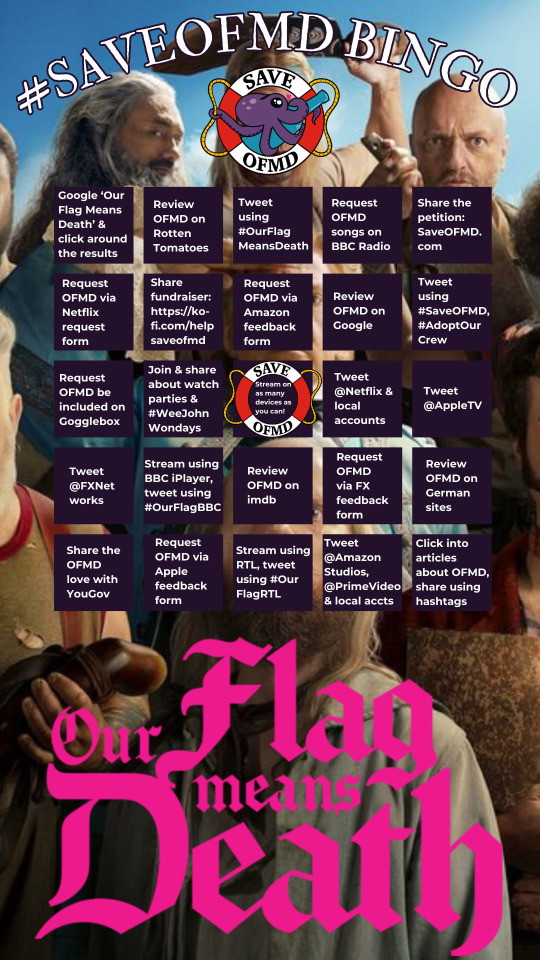
== Fan Spotlight ==
Febuary 29 bring the February LOVE #OurFlagMeansDeath Collage Fest to a close! Thank you again @wndrngnomad for taking the time to make such lovely dedications to our favourite show, cast, and crew!
Wanna see them all? Check them out here!

== Cast Trading Cards ==
Appropriate timing considering all the Vico sightings we've been seeing lately! Our lovely @melvisik has done it again. I didn't realize Vico was in Harley Quinn!
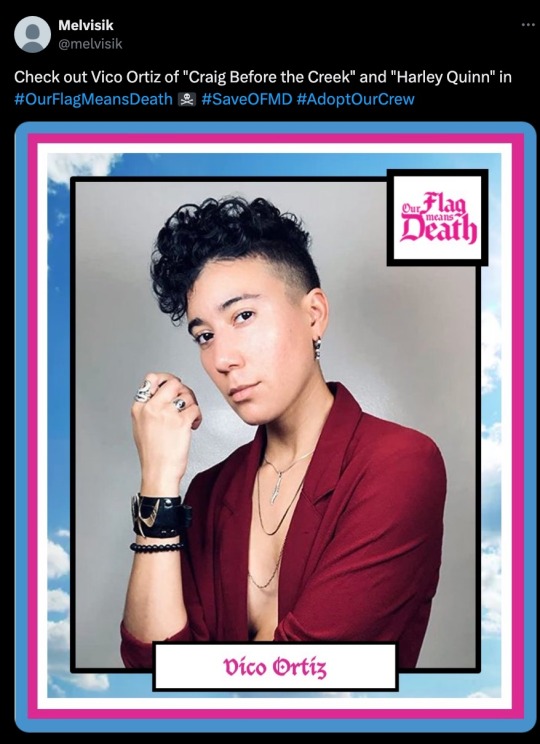
== Love Notes ==
HEY YOU!
Yes, YOU!
LOOK AT YOU!
With your awesome face, and your sweet ass smile!
Who do you think you are bringing all the swagger and charisma up in here? You're gonna blow this world away with that kind of powerful aura!
You are kicking ass today! Seriously, give yourself a big hug and a fist pump and say, "HELL YEAH!" because you are rocking it!
Now get out there and do whatever you're doing-- sleeping, playing, working, strutting, etc-- and show the next 24 hrs who'se's boss!
Love you crew <3
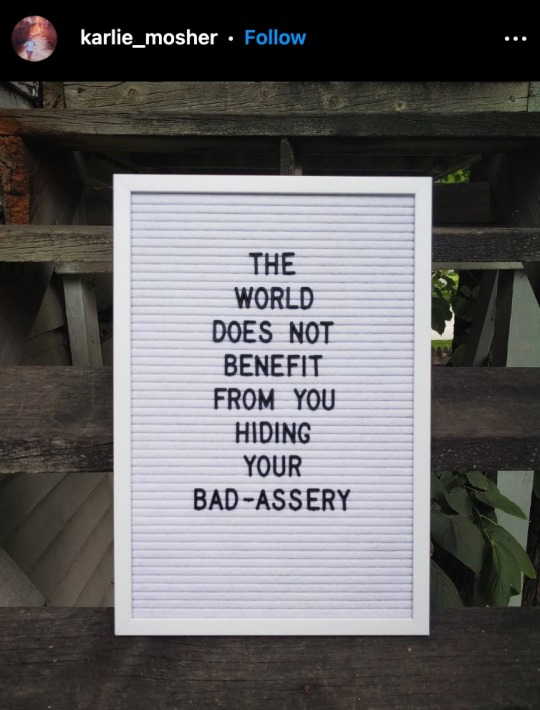
== Daily Darby / Tonight's Taika ==
Today's Darby is brought to you by none other than @sherlockig.
Daily Taika is by @memzhay. Why are these related? Idfk know, they just felt like generally the same vibe. Rhys being a cat chasing a string, and Taika a pup playing dead. (It's opposite day cause it's Leap Day, I guess).
Don't ask me how my mind works. I gave up many many moons ago.
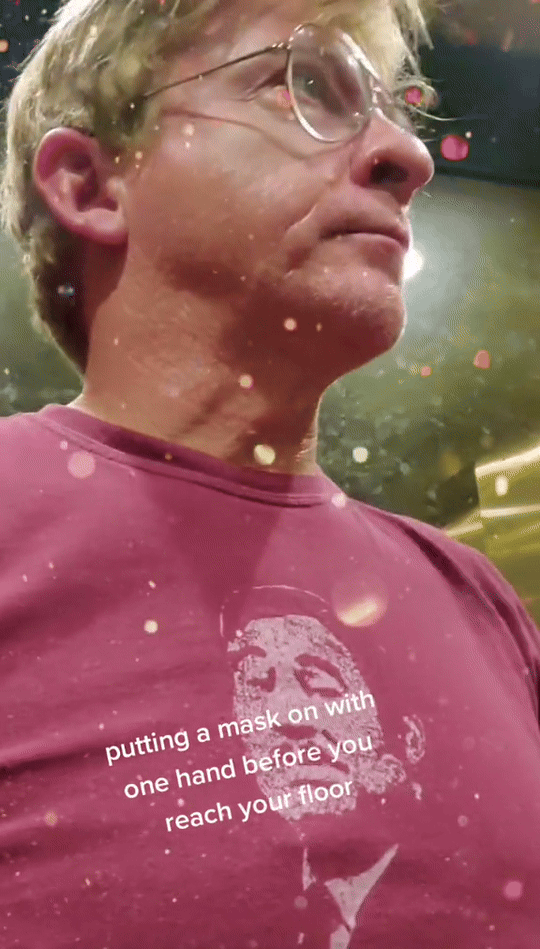

#daily ofmd recaps#daily ofmd recap#ofmd daily recaps#ofmd daily recap#ofmd#omg im so behind on comments and mentions! I promise I'll catch up tomorrow! <3<3<3#our flag means death#rhys darby#taika waititi#save ofmd#save our flag means death#hoist the ads#save ofmd crew#adopt our crew#@adoptourcrew#vico ortiz#gypsy taylor#samba schutte
67 notes
·
View notes